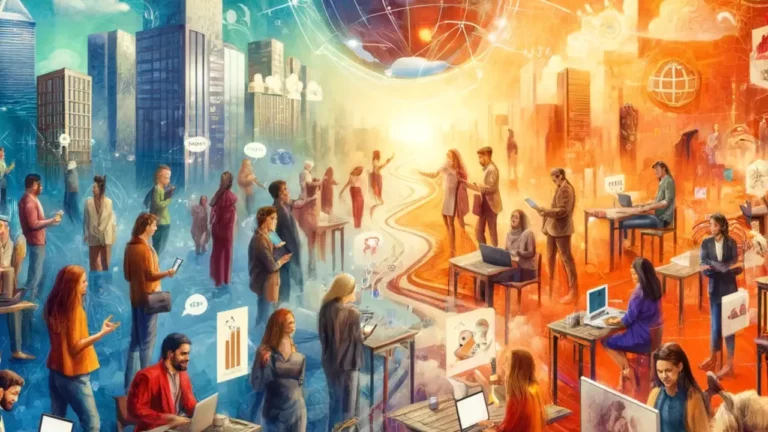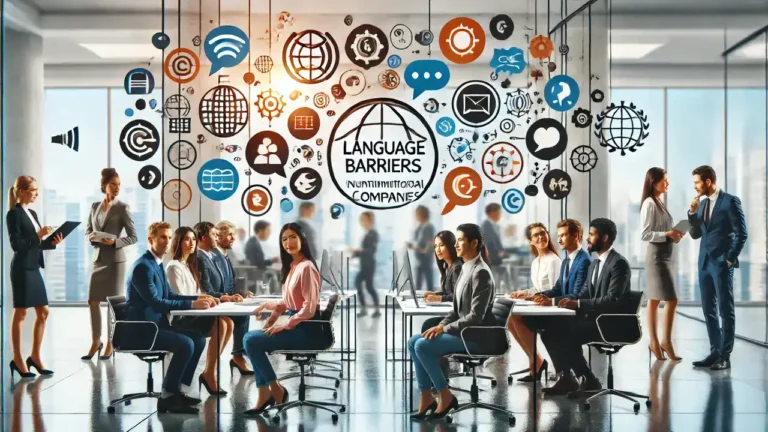Internal Barriers to Communication
Have you ever walked away from a conversation feeling unheard, misunderstood, or frustrated—even when both people spoke the same language? You’re not alone. Many people struggle with internal barriers to communication every single day. These hidden obstacles can turn simple exchanges into confusing, tense, or even emotional moments. The main question we face is: what exactly are internal barriers to communication, and how can we overcome them? This post takes a friendly, practical look at what’s really happening inside our minds and hearts, and offers real solutions for clearer, happier conversations—at work, at home, and everywhere in between.
What Are Internal Barriers to Communication?
Internal barriers to communication are obstacles that live within us. Unlike outside problems—such as loud rooms, poor internet connections, or language mismatches—these barriers are rooted in our thoughts, emotions, and personal experiences. When you can’t get your message across, or you feel misunderstood, it’s often because something inside is getting in the way.
These barriers can show up as self-doubt, anxiety, pre-judgments, or even simple fatigue. Sometimes, it’s hard to notice them until they cause real problems. For instance, a team leader who doubts their own ideas may struggle to share important feedback. Or, a parent who’s worried about their child’s future might snap during a harmless question, simply because of hidden stress.
Main Types of Internal Barriers to Communication
Psychological Barriers
One of the biggest internal barriers to communication comes from our own thoughts and attitudes. These psychological hurdles can include bias, stereotypes, and personal beliefs. If you believe your coworker always disagrees with you, you may ignore their good ideas before you’ve even listened. This is called confirmation bias, and it shapes countless discussions without us realizing it.
Emotional Barriers
Internal barriers to communication often involve strong emotions. Think about the last time you felt anxious before a meeting. Did your heart race? Did you stumble over words? Maybe you avoided speaking up altogether.
Emotions like fear, anger, frustration, or sadness can cloud our thinking. These feelings may cause us to misinterpret words or react more harshly than a situation deserves. Emotional barriers are especially common in stressful environments, such as fast-paced workplaces or during family conflicts.
Many companies now offer emotional intelligence training because they recognize how much emotions affect group conversations, morale, and decision-making. Self-awareness and empathy are tools anyone can develop for smoother exchanges.
Semantic Barriers
Not every barrier is emotional—some are purely about language and meaning. Semantic barriers happen when people attach different meanings to the same words. For example, the word “soon” could mean “in five minutes” to one person and “sometime today” to another. This creates confusion, delays, and even arguments.
Specialized language, such as jargon or technical terms, can also make communication harder. If you use accounting terms in a meeting with the marketing team, they might not understand, even if they nod politely. Using plain language and checking for understanding makes a world of difference.
A practical resource for clearer writing and speaking can be found at PlainLanguage.gov, where experts share tips for avoiding misunderstanding and speaking more directly.
Perceptual Barriers
Internal barriers to communication don’t always stem from strong feelings or confusing words. Sometimes, they arise from the unique ways we see the world. This is called perceptual filtering.
Imagine two employees, one who’s just received praise and another who’s had a rough morning. The same feedback may sound supportive to the first and critical to the second. Our mood, recent experiences, and even cultural background shape what we hear and how we react.
Understanding that every person brings a different lens to each conversation helps us pause before jumping to conclusions. In cross-cultural teams, perceptual barriers can become even more pronounced, leading to miscommunication that slows down progress or creates tension.
Attitudinal Barriers
Sometimes, it’s our attitude that acts as a wall. Maybe you feel unmotivated, or you simply aren’t interested in what the other person is saying. Attitudinal barriers include a lack of openness to new ideas, unwillingness to accept feedback, or just a fixed mindset.
Leaders often run into these roadblocks during periods of change. People may resist new policies or approaches simply because they’re comfortable with the old way. Being willing to listen, question your assumptions, and remain flexible are key skills for breaking down these walls.
Workshops on growth mindset and feedback culture can help organizations (and individuals) shift from “I already know everything I need to” to “What can I learn from this?”
Physiological Barriers
We often think about communication as a mental or emotional process, but our physical state matters too. Internal barriers to communication can appear as tiredness, headaches, illness, or even hunger. If you’ve ever tried to have a serious talk after a sleepless night, you know how tough it can be to stay focused or patient.
Some people face ongoing challenges like hearing loss, speech difficulties, or chronic pain, all of which can make it harder to share or receive information. Understanding these limitations and allowing for breaks, supportive technology, or simply patience can help everyone communicate better.
Intrapersonal Barriers
Each person has an inner voice that shapes what they say—or don’t say—out loud. Intrapersonal barriers include self-doubt, negative self-talk, and low self-esteem. When your mind is busy criticizing your own words, you may hesitate, withdraw, or simply keep your ideas to yourself.
Building confidence is a process. It starts with small wins—maybe sharing an idea in a meeting, or practicing a difficult conversation with a friend. Coaching, journaling, and mindfulness exercises are great tools for shifting that inner dialogue to something more positive.
Cultural and Socialization Factors
Internal barriers to communication also form over years of learning and habit. Family rules, school culture, and workplace norms all shape how we interact with others. In some cultures, speaking up is encouraged, while in others, silence is a sign of respect.
Understanding these cultural and social patterns is especially important for global teams or diverse communities. Training in cultural awareness helps groups respect different perspectives and reduces confusion caused by unspoken “rules.”
How Internal Barriers Develop Over Time
Internal barriers to communication don’t appear overnight. They grow through experiences, feedback (both good and bad), education, and even childhood. If someone grew up being told to “be quiet” or “don’t speak unless spoken to,” they may carry those habits into adult life, even if they want to change.
The modern workplace adds new layers, with remote teams, video calls, and fast digital messages often making it harder to pick up on tone and intent. Studies from SHRM show that internal barriers become stronger when people feel isolated or misunderstood, especially in hybrid or virtual work settings.
Consequences of Internal Barriers to Communication
When these barriers go unchecked, they can lead to serious misunderstandings, low morale, or missed opportunities. Projects stall, teams lose trust, and personal relationships become strained. It’s not just about “bad vibes”—it’s about real results, both good and bad.
For example, when team members feel too nervous to share their ideas, creativity suffers. If a manager struggles with self-doubt, they may avoid necessary feedback, letting problems grow. In families, misunderstandings about feelings or expectations can lead to arguments and hurt feelings.
Recognizing internal barriers to communication is the first step toward building a better environment—one where every voice can be heard, and every idea can be considered.
Real-World Examples of Internal Barriers
Let’s bring these ideas to life. Imagine a customer service team where one member always expects complaints, not compliments. This mindset leads them to sound impatient or short-tempered on calls, even when the customer is polite.
In another scenario, a new employee avoids asking questions because they’re afraid of looking foolish. They miss out on learning key processes, and the whole team pays the price in missed deadlines or errors.
At home, parents who grew up without open conversations about emotions may find it difficult to discuss feelings with their own children. These internal barriers can pass from one generation to the next, unless someone decides to break the pattern.
Overcoming Internal Barriers to Communication
The good news? You can work on internal barriers to communication, no matter where you start. Here are some real-world steps that make a big difference:
- Reflect on past conversations. What were you feeling? Did you react out of habit or emotion? Journaling or talking with a mentor can help you spot patterns.
- Practice empathy. Try to understand the other person’s feelings, even if you disagree. Respond thoughtfully, not impulsively.
- Avoid jargon, technical terms, or “company speak” unless you’re sure everyone is on the same page. Ask questions to check for understanding
- Show you’re paying attention. Nod, repeat key points, and ask clarifying questions. Let others finish before you respond.
- Welcome input from others—even when it stings. View feedback as a gift, not a threat. This helps break down defensive reactions.
- Rest, healthy food, and movement all impact how you communicate. Take care of your body, so your mind can do its best work.
- Many organizations offer training in communication skills, conflict resolution, and cultural awareness. Take advantage of these opportunities.
- Whether at work or at home, encourage honest dialogue and respect. Make it safe to share doubts, questions, and feelings.
- Use collaboration tools thoughtfully. Video calls and chat apps are helpful, but don’t replace real human connections. Schedule regular check-ins.
Conclusion
Breaking through internal barriers to communication is possible for anyone willing to pause, reflect, and try something new. The next time you feel stuck in a conversation, remember: it’s not always what’s being said, but what’s happening inside that matters most. Every step toward greater self-awareness and empathy brings you closer to clearer, kinder, and more successful connections.






